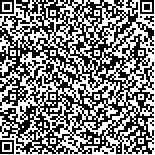袁玲玲,范朋琦.平喘药孟鲁司特联合运动干预治疗轻度哮喘儿童的疗效观察[J].中华物理医学与康复杂志,2022,44(3):243-247
扫码阅读全文

|
| 平喘药孟鲁司特联合运动干预治疗轻度哮喘儿童的疗效观察 |
|
| |
| DOI:10.3760/cma.j.issn.0254-1424.2022.03.012 |
| 中文关键词: 运动疗法 孟鲁司特 哮喘儿童 肺功能 生活质量 |
| 英文关键词: Exercise therapy Montelukast Asthmatic children Pulmonary function Life quality |
| 基金项目: |
|
| 摘要点击次数: 5144 |
| 全文下载次数: 5425 |
| 中文摘要: |
| 目的 观察平喘药孟鲁司特联合运动疗法对轻度哮喘儿童肺功能、临床症状、运动能力及生活质量(QOL)的影响。 方法 采用随机数字表法将70例7~14岁轻度哮喘儿童分为观察组及对照组,每组35例。观察组患儿给予平喘药孟鲁司特口服及运动干预(主要包括呼吸训练和有氧蹬车训练),对照组患儿仅服用孟鲁司特,2组患儿干预时间均为8周。于干预前、干预8周后分别采用肺活量计测定患儿肺功能,具体检测指标包括1秒用力呼气容积(FEV1)、用力肺活量(FVC)以及FEV1/FVC比值;采用6 min步行试验(6MWT)检测患儿运动功能情况;采用哮喘症状评分量表监测患儿疾病控制水平;选用儿童哮喘生活质量问卷(PAQLQ)评估患儿QOL,并记录2组患儿研究期间不良事件发生情况。 结果 与干预前比较,干预后观察组6MWT距离[(496.5±81.2) m]明显增加,同时6MWT结束时的心率[(128.1±9.0)次/min ]及主观疲劳感觉评级[(11.6±1.8)级]均明显减弱,哮喘日间、夜间症状评分[分别为(0.37±0.06)分和(0.26±0.04)分]均明显下降,PAQLQ各分项评分[症状评分为(5.16±1.15)分,活动受限评分为(5.01±1.08)分,情感功能评分为(6.35±1.28)分]及总分[(5.51±0.76)分]均明显增加,但肺功能各参数(FEV1、FVC和FEV1/FVC比值)变化无统计学意义(P>0.05);对照组干预后仅有日间和夜间症状评分[分别为(1.33±0.31)分和(1.47±0.41)分]明显降低,PAQLQ仅有症状评分[(4.30±0.87)分]明显增加,其他各分项指标结果均无显著变化(P>0.05)。此外2组患儿不良反应发生情况组间差异无统计学意义(P>0.05)。 结论 孟鲁司特联合运动干预治疗轻度哮喘儿童有效可行,且治疗过程中患儿耐受性及安全性良好,该联合疗法值得进一步研究、推广。 |
| 英文摘要: |
| Objective To observe any effect of combining the anti-asthmatic drug montelukast with exercise therapy on the pulmonary function, clinical symptoms, functional exercise capacity and quality of life of children with asthma. Methods Seventy children (between 7 and 14 years old) with mild asthma were randomly divided into an observation group (n=35) and a control group (n=35). Both groups were given the anti-asthmatic drug montelukast, while the observation group was additionally provided with breathing training and aerobic pedaling training. Before and after the intervention, both groups′ forced expiratory volume in 1 second, forced vital capacity and 6min walking test (6MWT) distance were tested. Their asthma symptoms were scored using the pediatric asthma quality of life questionnaire (PAQLQ). Any adverse events during the study were recorded. Results After 8 weeks the observation group′s average 6MWT distance, total PAQLQ score, as well as the scores on each domain of the PAQLQ (symptoms, activity restriction, emotions) had improved significantly. The observation group′s average heart rate and perceived exertion rating after the 6MWT had also improved significantly, as had their average daytime and nighttime asthma symptom scores. The control group also demonstrated significant improvement in their PAQLQ symptom scores and their daytime and nighttime asthma symptom scores after the intervention. There was no significant difference in the incidence of adverse reactions between the two groups. Conclusions Supplementing montelukast with exercise is effective and feasible in the treatment of children with mild asthma, with good safety and tolerance. Such combined therapy is worthy of further research and promotion. |
|
查看全文
查看/发表评论 下载PDF阅读器 |
| 关闭 |